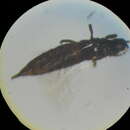Conservation Status
provided by University of Alberta Museums
Undocumented
- license
- cc-by-nc
- copyright
- University of Alberta Museums
Conservation Status
provided by University of Alberta Museums
Undocumented
- license
- cc-by-nc
- copyright
- University of Alberta Museums
Cyclicity
provided by University of Alberta Museums
Undocumented
- license
- cc-by-nc
- copyright
- University of Alberta Museums
Cyclicity
provided by University of Alberta Museums
Undocumented
- license
- cc-by-nc
- copyright
- University of Alberta Museums
Distribution
provided by University of Alberta Museums
Alberta, Yukon (Chiasson 1986).
- license
- cc-by-nc
- copyright
- University of Alberta Museums
Distribution
provided by University of Alberta Museums
Alberta, Nova Scotia (Chiasson 1986).
- license
- cc-by-nc
- copyright
- University of Alberta Museums
General Description
provided by University of Alberta Museums
Undocumented
- license
- cc-by-nc
- copyright
- University of Alberta Museums
General Description
provided by University of Alberta Museums
Undocumented
- license
- cc-by-nc
- copyright
- University of Alberta Museums
Habitat
provided by University of Alberta Museums
Artemesia sp., dry prairie, grass heads (Chiasson 1986).
- license
- cc-by-nc
- copyright
- University of Alberta Museums
Habitat
provided by University of Alberta Museums
Eleagnus commutata (Chiasson 1986).
- license
- cc-by-nc
- copyright
- University of Alberta Museums
Life Cycle
provided by University of Alberta Museums
Undocumented
- license
- cc-by-nc
- copyright
- University of Alberta Museums
Life Cycle
provided by University of Alberta Museums
Undocumented
- license
- cc-by-nc
- copyright
- University of Alberta Museums
Trophic Strategy
provided by University of Alberta Museums
Undocumented
- license
- cc-by-nc
- copyright
- University of Alberta Museums
Trophic Strategy
provided by University of Alberta Museums
Undocumented
- license
- cc-by-nc
- copyright
- University of Alberta Museums
Haplothrips
provided by wikipedia EN
Haplothrips is a genus of thrips in the family Phlaeothripidae. It is found worldwide and contains about 240 extant species.[1]
Description
Thrips of this genus are medium-sized with one pair of 8-segmented antennae, three pairs of legs and usually two pairs of well-developed wings (macropterous). The head has a short mouth cone and a pair of deeply retracted maxillary stylets. The forewings are distinctly constricted in the middle and (in subgenus Haplothrips) have duplicated cilia. The second through to the seventh abdominal tergites each have two pairs of sigmoid wing-retaining setae. In males, the ninth abdominal tergite has setae S2 short and stout, while the eight abdominal sternite usually has no pore plate.[2] The male of H. dissociatus is unusual in having a small pore plate.[3]
Some of the aforementioned features, such as the forewing constriction, are shared by other Haplothripini.[4]
Ecology
Haplothrips mostly feed and breed in flowers. The northern hemisphere species prefer flowers of Asteraceae and Poaceae, while the Australian species feed on a range of families. Some species are instead associated with leaves.[4]
Other Haplothrips are predatory. Examples are H. faurei and H. victoriensis, which are used in biological control of mites.[5]
The Hawaiian species H. rosai is believed to feed on fungi.[6]
Pests
Haplothrips aculeatus and H. ganglbaueri are pests of millet,[7] while unspecified Haplothrips species are pests of cashew.[8]
Selected species
-
Haplothrips aculeatus (Fabricius, 1803)
-
Haplothrips articulosus Bagnall, 1926
-
Haplothrips cerealis Priesner, 1939
-
Haplothrips clarisetis Priesner, 1930
-
Haplothrips distinguendus Uzel, 1895
-
Haplothrips fuliginosus Schille, 1912
-
Haplothrips gowdeyi (Franklin, 1908)
-
Haplothrips graminis Hood, 1912
-
Haplothrips habermani Strassen, 1964
-
Haplothrips halophilus Hood, 1915
-
Haplothrips herajius Minaei & Aleosfoor, 2013[9]
-
Haplothrips kurdjumovi (Karny, 1913)
-
Haplothrips leucanthemi (Schrank, 1781)
-
Haplothrips malifloris Hood, 1916
-
Haplothrips minutus (Uzel, 1895)
-
Haplothrips nigricornis Bagnall, 1910
-
Haplothrips nubilipennis Hood, 1914
-
Haplothrips preeri Hood, 1939
-
Haplothrips rectipennis Hood, 1927
-
Haplothrips reuteri (Karny, 1907)
-
Haplothrips robustus Bagnall, 1918
-
Haplothrips ruber (Moulton, 1911)
-
Haplothrips setiger Priesner, 1921
-
Haplothrips shacklefordi Moulton, 1927
-
Haplothrips stactices (Haliday, 1836)
-
Haplothrips subterraneus Crawford, 1938
-
Haplothrips verbasci (Osborn, 1897)
-
Haplothrips xanthocrepis Hood, 1940
References
-
^ "Haplothrips - Thrips Wiki". thrips.info. Retrieved 2023-01-30.
-
^ Mound, LA; Tree, DJ (2022). "Factsheet - Haplothrips". keys.lucidcentral.org. Retrieved 2023-01-30.
-
^ Cavalleri, Adriano; Lindner, Mariana F.; Mendonça, Milton de S. (2016-06-10). "New Neotropical Haplothripini (Thysanoptera: Phlaeothripidae) with a key to Central and South American genera". Journal of Natural History. 50 (21–22): 1389–1410. doi:10.1080/00222933.2015.1113316. ISSN 0022-2933. S2CID 87660372.
-
^ a b Mound, Laurence A.; Minaei, Kambiz (2007). "Australian thrips of the Haplothrips lineage (Insecta: Thysanoptera)". Journal of Natural History. 41 (45–48): 2919–2978. doi:10.1080/00222930701783219. ISSN 0022-2933. S2CID 85271396.
-
^ Hagen, K.S.; Mills, N.J.; Gordh, G.; Mcmurtry, J.A. (1999), "Terrestrial Arthropod Predators of Insect and Mite Pests", Handbook of Biological Control, Elsevier, pp. 383–503, doi:10.1016/b978-012257305-7/50063-1, ISBN 978-0-12-257305-7, retrieved 2023-01-30
-
^ Mound, Laurence A.; Matsunaga, Janis N. (2017-03-21). "The species of Haplothrips (Thysanoptera, Phlaeothripinae) and related genera recorded from the Hawaiian Islands". ZooKeys (662): 79–92. doi:10.3897/zookeys.662.12107. ISSN 1313-2970. PMC 5539360. PMID 28769610.
-
^ Kalaisekar, A.; Padmaja, P.G.; Bhagwat, V.R.; Patil, J.V. (2017), "Systematics and Taxonomy", Insect Pests of Millets, Elsevier, pp. 27–72, doi:10.1016/b978-0-12-804243-4.00002-1, ISBN 978-0-12-804243-4, retrieved 2023-01-30
-
^ Nair, K.P. Prabhakaran (2010), "Cashew Nut (Anacardium occidentale L.)", The Agronomy and Economy of Important Tree Crops of the Developing World, Elsevier, pp. 21–66, doi:10.1016/b978-0-12-384677-8.00002-3, ISBN 978-0-12-384677-8, retrieved 2023-01-30
-
^ Minaei; Aleosfoor (2013). "A new species of Haplothrips from southern Iran (Thysanoptera, Phlaeothripidae)". ZooKeys (275): 91–99. doi:10.3897/zookeys.275.4433. PMC 3677329. PMID 23794813.
- license
- cc-by-sa-3.0
- copyright
- Wikipedia authors and editors
Haplothrips: Brief Summary
provided by wikipedia EN
Haplothrips is a genus of thrips in the family Phlaeothripidae. It is found worldwide and contains about 240 extant species.
- license
- cc-by-sa-3.0
- copyright
- Wikipedia authors and editors

